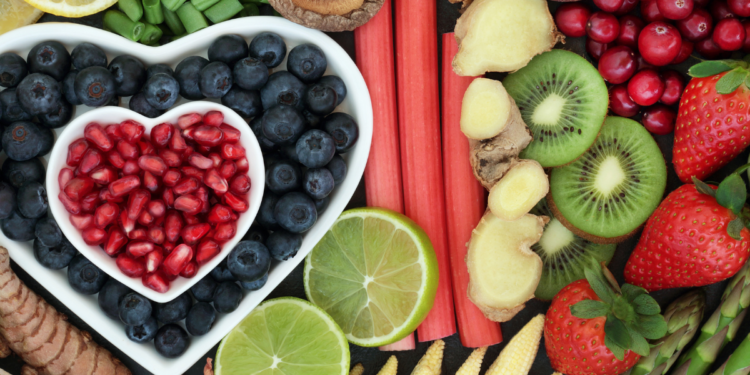Women’s bodies undergo many changes, evolve over time and have differing needs throughout each stage of life as hormones and body compositions shift with age.
During their 20s-30s young women may be more focused on whole-body health, menstrual integrity and supporting the processes of fertility, pregnancy and childbearing. In their 40s-50s that focus can shift to concerns such as how to stay physically active, bone health, promoting longevity and moving through the stages of menopause in a healthy way. In the 60s and beyond, emphasis tends to focus on healthy aging, maintaining energy and strength and core strategies to ensure optimal health, avoid injury and maintain independent living throughout the golden years.
For women of all ages, the prevention of disease processes and focusing on healthy lifestyles should always be a primary and ongoing focus. Good nutrition is a fundamental component for all of these goals.
20s-30s
As young women enter adulthood, lifestyle and nutrition are paramount and if they have goals to support fertility and pregnancy these things will take on many other layers to support the healthy development of a baby. Optimizing these aspects of self-care not only help the health of the reproductive organs and/or a developing baby, they also provide a solid foundation and healthy terrain for every young woman pursuing whole-body health.
Lifestyle considerations for whole-body health can include: regular exercise, limiting alcohol consumption (or eliminating alcohol if pregnant or trying to conceive), maintaining a healthy weight, minimizing stress, avoiding environmental toxins that can affect hormones and getting enough sleep.
Young women should strive to consume nutrients found in everyday foods that are super-charged to support metabolic processes crucial for general health and/or for childbearing:
- Omega-3s (Fatty fish such as salmon/mackerel/tuna, walnuts, flax and chia seeds)
- Folate (Dark leafy greens, cruciferous vegetables like broccoli, turnip greens and beef liver)
- Choline (Meat, eggs, poultry, cruciferous vegetables such as Brussels sprouts/broccoli/cauliflower, and some types of beans, nuts and seeds, such as sunflower flower seeds)
- Selenium (Brazil nuts – one a day is a supreme source and important for reproduction)
- Iron (Red meat, beans, lentils and spinach)
For pregnancy, a prenatal multi-vitamin is standard along with other supplements that may augment nutritional status. Young women should also understand that adequate nutritional intake, particularly of protein and calcium, while young will affect their status and bone health as they reach middle age.
Sleep and Stress Strategies
All women should work to get adequate sleep and reduce stress. For sleep in particular, certain nutrients, herbs or supplements can be beneficial:
- Magnesium
- B vitamins
- Herbs such as Tulsi, Ashwagandha or Passion Flower (Many herbal ‘sleep’ teas or supplements on the market will contain these).
- Melatonin (Note that in pregnancy, melatonin levels naturally rise and supplementation may not be advised and should be discussed with your OBGYN).
Talking to your healthcare provider before taking any supplements or vitamins is strongly recommended.
Stress management is also important to health and well-being at every age. Chronic stress can impact many markers of health, contribute to hormone imbalances and also be a contributing factor to infertility.
Stress management techniques such as yoga, meditation, acupuncture or deep breathing techniques can help alleviate stress. Adrenal adaptogens like Ashwagandha, Rhodiola, lemon balm and ginseng may also help smooth harder transitions in life or help build resilience to stress. Adrenal adaptogens are plants (or fungi like mushrooms) that help your body respond to stress, anxiety and fatigue and help restore overall well-being. These can often be taken by adding them to food or beverages or taking them as tinctures.
40s-50s and Beyond
As women continue to mature, many of the aforementioned strategies still hold true. However, all women will eventually find themselves transferring their focus to menopause, hormonal issues, maintaining strength and energy, working on cardiovascular health, looking forward to preventing disease and laying a foundation for longevity.
Bone health is a common concern and it actually begins earlier in life. It is important for younger women to have adequate protein and calcium intake and to establish good bone-strengthening habits such as exercise. In addition to calcium, other minerals are just as crucial and women should ensure that they are eating foods that contain them:
- Calcium (Dairy, sesame seeds and green leafy vegetables)
- Magnesium (Green leafy vegetables, legumes, nuts, seeds and whole grains)
- Manganese (Nuts, pineapple, beans, shellfish, chocolate, cinnamon and tea)
- Boron (Prunes, raisins, dried apricots and avocados)
- Selenium (Wheat, red meat and seafood)
- Silicon (Cereals, carrots and green beans)
In addition, vitamins C, D, K and herbs such as red clover, black cohosh or kudzu may also be beneficial in supporting the health of the skeletal system.
Perimenopause, menopause and hormonal health takes the spotlight as we hit our 40s. This is a gradual process as the body makes less and less estrogen. Perimenopause lasts until the ovaries stop releasing eggs, menstruation stops and menopause begins. Typical symptoms include irregular periods, mood swings, trouble sleeping, fatigue, weight gain, breast tenderness, PMS, vaginal dryness and reduced sex drive.
In addition to maintaining weight, exercise, proper sleep and stress management, nutrition can be a primary strategy to support healthy hormone levels:
- Minimize refined carbohydrates (breads, pastas) and eat less sugar
- Upcharge your diet with more vegetables, healthy fats (olive oil, avocado), fruit and high-quality protein sources
- Combat inflammatory substances with more cruciferous vegetable, brown rice and detoxifying drinks like green tea
- Zinc or zinc-containing foods support healthy testosterone levels (and possibly improved sexual function)
- Consuming soy and soy isoflavones may reduce intensity and frequency of hot flashes
- Hormone supportive herbs, such as tribulus and maca may help in the support of healthy libido and black cohosh and/or chaste tree have been shown to ease symptoms surrounding menopause and may also be beneficial.
As we head into our 60s and beyond, growing evidence is showing that natural healthy habits such as nutrition/supplements/botanicals, lifestyle and community are all important to healthy aging. Regulating inflammation, cancer prevention, brain health and monitoring conditions such as osteoporosis are also imperative to prevent injury and help older adults maintain vitality and independence. Doctors of chiropractic not only help women of every age optimize joint integrity and mobility but also help to maximize function for neuromusculoskeletal health, analyze risks for possible conditions, can help you retain testing for concerns such as osteoporosis and can advise on lifestyle and nutritional choices to help women stay vibrant and strong through every stage of life.


